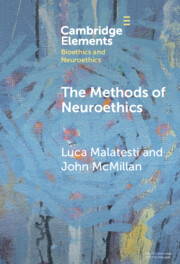Element contents
The Methods of Neuroethics
Published online by Cambridge University Press: 12 January 2024
Summary
- Type
- Element
- Information
- Online ISBN: 9781009076173Publisher: Cambridge University PressPrint publication: 08 February 2024
References
- 5
- Cited by



